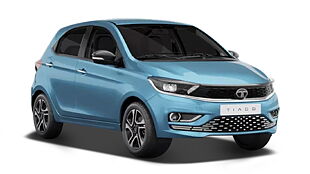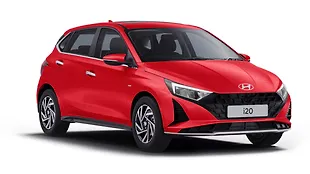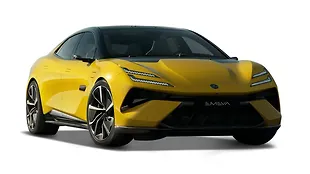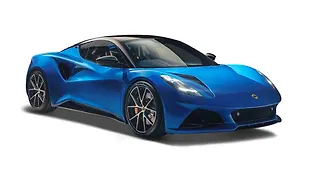Introduction
While looks are almost always subjective, we have never missed an opportunity to share our views on each new car that is launched. While some may fall head over heels for the design, others might tend to dislike it, for reasons best known to them. But what actually goes down in sketching down a design from scratch? We were recently invited to the Tata Motors design studio in Pune, Maharashtra to get a taste of the same.
Back story
Tata Motors has three design studios located in U.K. (Coventry), Italy (Turin) and Pune (India). The day began with the media from various publications arriving at the Tata Motors plant located in Pimpri-Chinchwad. Then we were introduced to the design studio by none other than the Global Head of Design for Tata Motors, Pratap Bose. The introduction was followed by a brief explanation about the journey that Tata Motors has witnessed in the last two decades (passenger vehicle department).
While Tata Motors was initially a truck manufacturer, the company made its debut in the PV segment with the Indica, back in 1998. The Indica was also the first model to come equipped with a plastic bumper. In 2014, the brand began working on its ‘Impact Design’ philosophy which turned into reality when they were showcased via models such as the Tiago, Tigor and Nexon at the 2016 Auto Expo.

Surprising to a majority of people, all the concepts showcased at the Auto Expo in 2016 that made their way to the production line were largely similar to the concept versions in terms of the design. Pratap Bose said that Tata always plans on sticking to the design on the concept as much as possible. This feat was repeated again when the company launched the Harrier, based on the H5X concept.
Crash course
After a small presentation on Tata’s history and present, Pratap Bose told us that we would be designing at the studio. Amazed and excited at the same time, some of us had to pinch ourselves to come back to reality, more so when he said that the sketches would be further moulded into the clay format. This is also where we learnt that the design process is a far lengthier process than one might have ever thought. It begins with numerous sketches and by the time the final design is ready, an average of 48 months or two years have passed by.

Coming to our main activity for the day, we were split into a team of four batches, with each batch comprising of three journalists. We were randomly allotted a vehicle design, and to our sheer luck, it was a hatchback. Three journalists and one senior member from the Tata Motors design team sat down on one table, discussing and sketching their own plans. We were first told to get an idea of what we would want in a hatchback with details regarding the size, exterior design, highlights and various other elements. Mind you, we had a time limit of one hour to finish the design and hand it over to Pratap Bose after which he would choose the winning design that would go on to be etched in clay.

Our team began sketching individually, creating our distinct designs on how a sporty hatchback should be. We were given some suggestions and inputs at intervals from a senior member of the design team, thus improving our design to a great extent. While we could agree on most of the points regarding the design, our sketches were turning out to be a bit different. With the clock ticking, the senior design team member had a look at our sketches and brought to life our ideas and designs in a manner that would take a few days if not more. The design was submitted to Pratap Bose who shortlisted one design each for the hatchback and commercial vehicle, which would now be shaped onto the clay format. Known as clay modeling, the process involves use of clay on a base, giving the desired design by hand, where the warm temperature clay is smeared on a base, and as additional layers of clay are put, the warm clay gets hard as it cools down, thus taking the desired shape or form.

The clay modeling process is followed by a digital scan where each portion of the model is scanned and fed to a computer, and then taken over by the digital process of design. The digital process then allows designers to tweak the more detailed and intricate parts that are difficult to make on clay.
End of day’s play

While we were shown the basics of design, helping us get a fair idea regarding what all goes into the design of a car, it is realistically a very minor scale compared to the time taken for an actual design to come to life. That said, the visit has completely changed my thinking and approach towards car designs and I’ll be sure to remember this entire process whenever someone speaks about design in any walk of life.

![Tata Tiago [2016-2020] Image Tata Tiago [2016-2020] Image](https://imgd.aeplcdn.com/272x153/cw/ec/20880/Tata-Tiago-Exterior-120831.jpg?wm=0&q=80)
![Tata Tiago [2016-2020] Exterior Tata Tiago [2016-2020] Exterior](https://imgd.aeplcdn.com/199x112/cw/ec/20880/Tata-Tiago-Exterior-120831.jpg?wm=0&q=80)
![Tata Tiago [2016-2020] Right Front Three Quarter Tata Tiago [2016-2020] Right Front Three Quarter](https://imgd.aeplcdn.com/199x112/cw/ec/20880/Tata-Tiago-Right-Front-Three-Quarter-70545.jpg?v=201711021421&q=80)
![Tata Tiago [2016-2020] Right Front Three Quarter Tata Tiago [2016-2020] Right Front Three Quarter](https://imgd.aeplcdn.com/199x112/cw/ec/20880/Tata-Tiago-Right-Front-Three-Quarter-101601.jpg?v=201711021421&wm=1&q=80)
![Tata Tiago [2016-2020] Dashboard Tata Tiago [2016-2020] Dashboard](https://imgd.aeplcdn.com/199x112/cw/ec/20880/Tata-Zica-Dashboard-61428.jpg?v=201711021421&q=80)
![Tata Tiago [2016-2020] Steering Wheel Tata Tiago [2016-2020] Steering Wheel](https://imgd.aeplcdn.com/468x263/cw/ec/20880/Tata-Tiago-Steering-Wheel-101624.jpg?v=201711021421&wm=1&q=80)


























